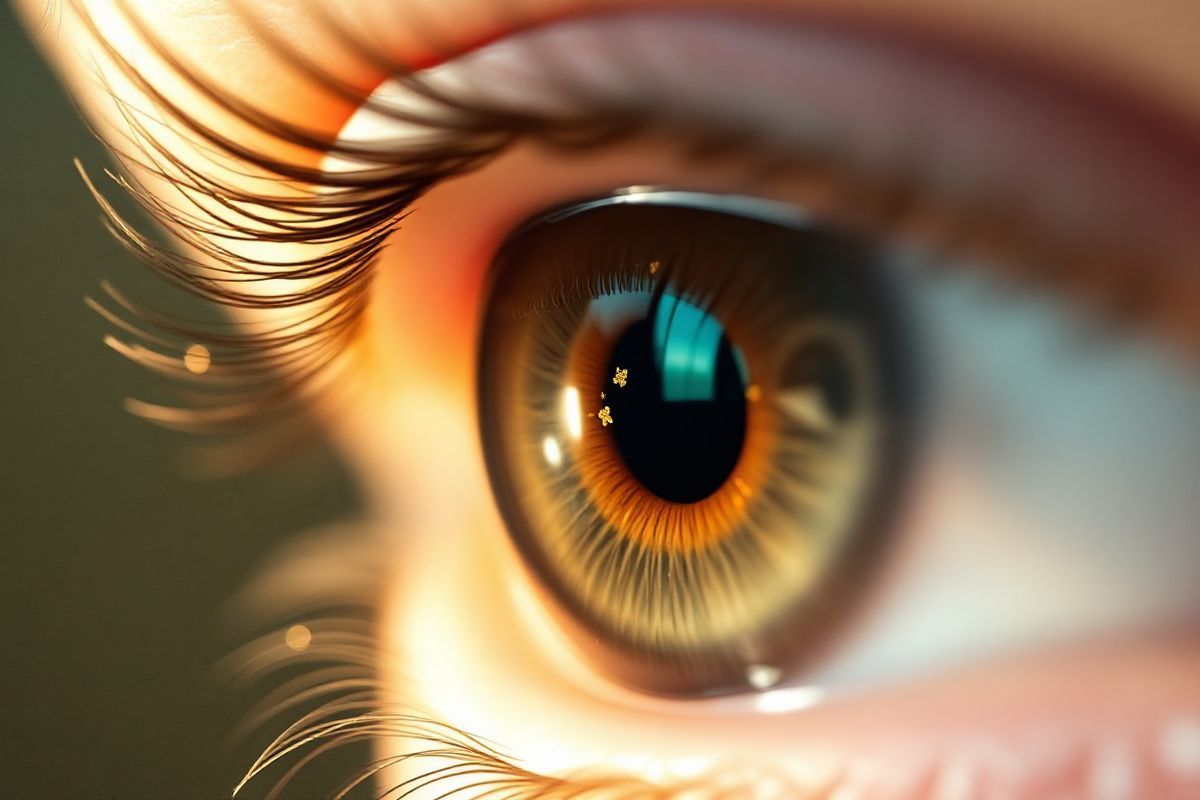Table of Contents
The Impact of Keratoconus on Vision: From Mild Distortion to Severe Impairment

Keratoconus is characterized by a thinning and conical shape of the cornea, which distorts light entering the eye. This distortion can lead to various visual symptoms ranging from mild blurriness to severe visual impairment. Patients may experience increased sensitivity to light, glare, and halos around lights, particularly at night. As the condition progresses, it can lead to significant challenges in daily activities, such as reading, driving, and recognizing faces.
The progression of keratoconus varies among individuals. Initially, many patients may not realize they have a problem as the changes in vision can be subtle. However, as the cornea continues to thin, the visual distortions become more pronounced. By the time the disease reaches advanced stages, patients may find it increasingly difficult to correct their vision with standard glasses or contact lenses, necessitating further medical intervention.
Visual Impairment and Quality of Life
Visual impairment due to keratoconus can drastically affect a person’s quality of life. Many individuals report difficulties in work and social situations, leading to emotional distress and anxiety. Studies have shown that individuals with significant visual impairment often experience a decline in mental health and overall well-being (Vision loss, low vision and legal blindness, 2023).
Defining Legal Blindness: What It Means and How It Relates to Keratoconus

Legal blindness is a term used to describe a significant level of visual impairment. In the United States, an individual is considered legally blind if their best-corrected vision is 20/200 or worse in the better eye or if their visual field is 20 degrees or less (What Does it Mean to be Legally Blind?, 2023). This definition is crucial for determining eligibility for various services and benefits.
For individuals with keratoconus, reaching the threshold for legal blindness can occur as the disease progresses, especially if it leads to significant corneal scarring or other complications. It is important to note that legal blindness does not equate to total blindness; many legally blind individuals retain some usable vision and can perform daily tasks with appropriate aids.
The Importance of Early Diagnosis
Early diagnosis of keratoconus is critical in preventing progression to legal blindness. Regular eye examinations, particularly for individuals at higher risk, such as those with a family history of the condition, can facilitate timely intervention.
Recognizing the Signs of Visual Impairment: Early Symptoms and Diagnosis
Keratoconus may present with various early symptoms, often starting with minor visual distortions. Common early signs include:
- Blurred vision that fluctuates
- Increased sensitivity to light
- Difficulty seeing at night
- Frequent changes in prescription glasses
As the condition advances, symptoms may worsen, leading to significant visual impairment. Diagnosis typically involves comprehensive eye examinations, including:
- Corneal topography: A diagnostic test that maps the curvature of the cornea and identifies irregularities.
- Slit-lamp examination: To assess the cornea and detect any thinning or scarring.
- Visual acuity tests: To determine the clarity of vision at various distances.
Importance of Monitoring
Regular monitoring of keratoconus is essential for managing the condition effectively. Patients should be aware of changes in their vision and report them to their eye care professionals promptly.
Navigating Treatment Options: Managing Keratoconus and Preventing Vision Loss
Treatment options for keratoconus vary depending on the severity of the condition and can be categorized into three main approaches:
-
Optical correction: Initially, many patients can manage keratoconus with glasses or soft contact lenses. However, as the disease progresses, rigid gas permeable (RGP) lenses are often recommended to provide better vision correction.
-
Corneal cross-linking: This minimally invasive procedure strengthens the cornea by cross-linking collagen fibers using riboflavin (vitamin B2) and ultraviolet light. Cross-linking can halt the progression of keratoconus and is often recommended for patients with advancing disease.
-
Corneal transplantation: In cases of severe keratoconus where significant scarring has occurred, a corneal transplant may be necessary. This surgical procedure involves replacing the damaged cornea with a healthy donor cornea.
Emerging Treatments
Innovative treatments are continually being researched and developed. These include:
- Intacs: Intrastromal corneal ring segments that can be inserted into the cornea to flatten its shape and improve vision.
- Scleral lenses: Larger, specially designed gas permeable lenses that vault over the cornea and rest on the sclera, providing improved comfort and vision for patients with irregular corneas.
Living with Visual Impairment: Resources and Support for Those Affected by Keratoconus
Living with keratoconus and potential visual impairment can present numerous challenges. However, various resources and support systems are available for individuals affected by the condition.
Support Groups and Organizations
Support groups can provide emotional support, sharing of experiences, and practical advice. Organizations such as the National Keratoconus Foundation offer educational materials, resources for patients, and connections to local support groups.
Low Vision Rehabilitation
Low vision rehabilitation programs can help patients maximize their remaining vision and learn adaptive techniques to perform daily activities. These programs may include training on the use of assistive devices, mobility training, and occupational therapy.
Legal Resources
For individuals facing legal blindness due to keratoconus, understanding legal rights and benefits is essential. Resources are available to help navigate the process of obtaining legal blindness certification and accessing related services.
Frequently Asked Questions (FAQ)
What is keratoconus?
Keratoconus is a progressive eye disorder that affects the cornea, leading to visual distortion and impairment.
How is keratoconus diagnosed?
Keratoconus is diagnosed through comprehensive eye examinations, including corneal topography and slit-lamp examination.
What are the treatment options for keratoconus?
Treatment options include optical correction, corneal cross-linking, and corneal transplantation.
Can keratoconus lead to legal blindness?
Yes, as keratoconus progresses, it can lead to legal blindness if the vision deteriorates to 20/200 or worse despite correction.
Where can I find support for living with keratoconus?
Support groups, organizations like the National Keratoconus Foundation, and low vision rehabilitation services can provide assistance.
References
- Vision loss, low vision and legal blindness. Retrieved from https://www.mdfoundation.com.au/living-well/living-with-vision-loss/vision-loss-low-vision-and-legal-blindness/
- What Does it Mean to be Legally Blind? Retrieved from https://theeyeandlasercenter.com/eye-resources/what-does-it-mean-to-be-legally-blind/
- Legally Blind: What It Is, Qualifications & Common Questions. Retrieved from https://my.clevelandclinic.org/health/articles/legally-blind
- Understanding Blindness. Retrieved from https://blind.iowa.gov/publications-media/understanding-blindness
- Low Vision and Legal Blindness Terms and Descriptions. Retrieved from https://www.afb.org/blindness-and-low-vision/eye-conditions/low-vision-and-legal-blindness-terms-and-descriptions
- What is Vision Impairment? Retrieved from https://ophthalmology.pitt.edu/vision-impairment/what-vision-impairment
- Low Vision: Causes, Characteristics, Treatment & Prevention. Retrieved from https://my.clevelandclinic.org/health/diseases/8585-low-vision
- Fast Facts: Vision Loss. Retrieved from https://www.cdc.gov/vision-health/data-research/vision-loss-facts/index.html
- Biomarker discovery using machine learning in the psychosis spectrum. Retrieved from https://doi.org/10.1016/j.bionps.2024.100107
- Evaluation of health literacy and its predictive formative factors among Spanish military personnel. Retrieved from https://pubmed.ncbi.nlm.nih.gov/11649223/
- Parents’ tacit knowledge of their child with profound intellectual and multiple disabilities: A qualitative study. Retrieved from https://pubmed.ncbi.nlm.nih.gov/11649206/
- Visual Impairment (for Teens). Retrieved from https://kidshealth.org/en/teens/visual-impairment.html
- Vascular cognitive impairment: Advances in clinical research and management. Retrieved from https://pubmed.ncbi.nlm.nih.gov/11649275/











